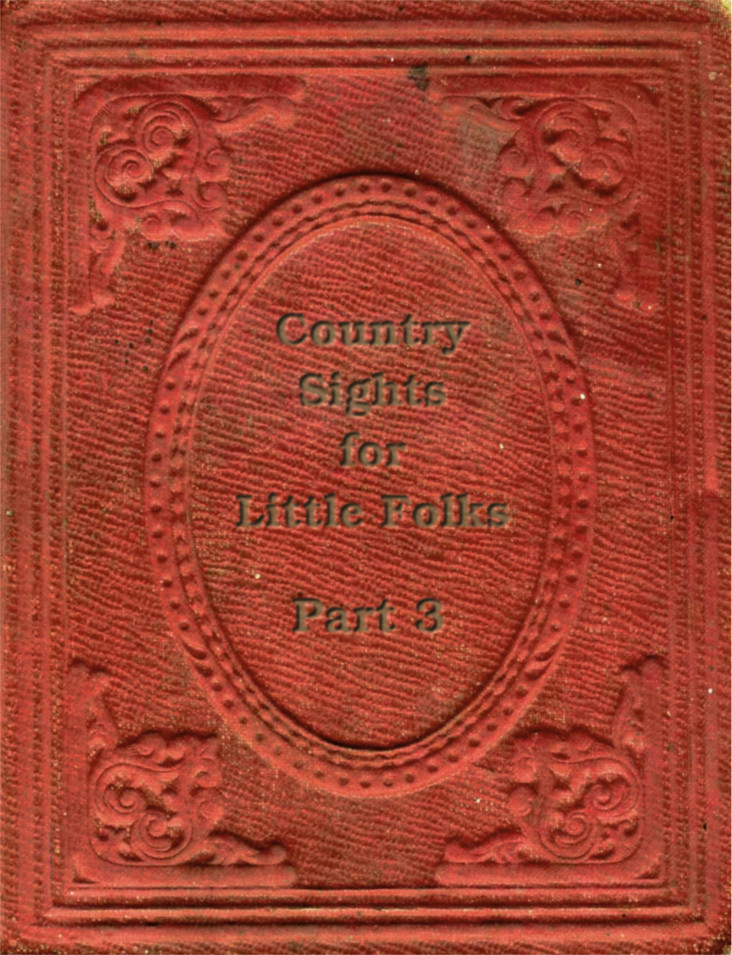HAYMAKING
 I know not what the poor cattle would do in the winter season, if we could not preserve the summer grass and herbage for their use. It is a most valuable quality of these inestimable plants, that they retain their nourishment and even their fragrance for months or years, if cut at the proper season, dried in the sun, and stacked so as to exclude the weather.
I know not what the poor cattle would do in the winter season, if we could not preserve the summer grass and herbage for their use. It is a most valuable quality of these inestimable plants, that they retain their nourishment and even their fragrance for months or years, if cut at the proper season, dried in the sun, and stacked so as to exclude the weather.
About midsummer, the farmers get busy with their hay. Mowing the grass, if the crop be a good one, is reckoned the most laborious employment of the countryman. He is paid extra money at this time, which, indeed, he well deserves. The haymaking, that is, the turning and tossing the grass about that it may be effectually dried in the sun and aired, is sometimes the work of women and children, assisted perhaps by the farmer’s own family and friends; for the occupation in fine summer weather is a most delightful one, and many a merry scene there is in a hay field, I assure you. Perhaps you can remember some sport of this kind?
LOADING THE HAY
 This is harder work than haymaking, and is usually performed by men. The hay having been first raked in rows, and then in heaps, is at length got together in still larger parcels, called haycocks, ready for the cart. This vehicle is furnished with a projecting rigging or ladder before and behind, so that it holds a large quantity of hay, and often the horses or oxen are nearly invisible under their Shaggy and shadowy load.
This is harder work than haymaking, and is usually performed by men. The hay having been first raked in rows, and then in heaps, is at length got together in still larger parcels, called haycocks, ready for the cart. This vehicle is furnished with a projecting rigging or ladder before and behind, so that it holds a large quantity of hay, and often the horses or oxen are nearly invisible under their Shaggy and shadowy load.
Now, gee, honest Dobbin, we have not done yet;
The load is not heavy, so pray do not fret;
I’m sure you can’t tell me how large it appears,
But you feel the loose hay-stalks that tickle your ears.
There, step away nicely, and you at the top,
Do not lean too much over for fear you should drop;
Gee, whoo! there, he managed that hole, I declare,
We had a turn over one summer just there.
And now, little lady, get down, if you please,
For-we must go under the boughs of the trees.
There’s a good little Fanny, now come to this side:
Dear Papa, he has got you; O what a nice ride!
STACKING THE HAY
 Hay is sometimes taken on a cart or wagon to the barn and placed on the mow, and it is often stacked in the field. There is some art in stacking the hay well. It should be spread regularly in even layers, and not pressed down in one part more than other. Hay badly got together in the stack, leans on one side, tumbles, heats, lets in the weather, and often takes fire. When stacked, it should be well pulled all round: all the loose straggling hay drawn out and put at the top, thus leaving a neat flat-sided structure, very much like a small house, and thatched at the top. When good hay is thus prepared, it will be wholesome nourishing food for cattle after standing three or four years.
Hay is sometimes taken on a cart or wagon to the barn and placed on the mow, and it is often stacked in the field. There is some art in stacking the hay well. It should be spread regularly in even layers, and not pressed down in one part more than other. Hay badly got together in the stack, leans on one side, tumbles, heats, lets in the weather, and often takes fire. When stacked, it should be well pulled all round: all the loose straggling hay drawn out and put at the top, thus leaving a neat flat-sided structure, very much like a small house, and thatched at the top. When good hay is thus prepared, it will be wholesome nourishing food for cattle after standing three or four years.
I see in the print they have a wagon and two horses with two men there, and three on the stack. I dare say they expect rain, and are making all speed. In fine weather, a horse and cart and two men will manage this business very well. Hay is a valuable commodity, and is carted to the city markets, in great quantities. Sometimes spiteful and wicked men will set stack-yards on fire, and thus not only the hay, but buildings and cattle are frequently destroyed.

